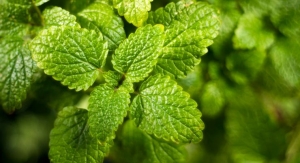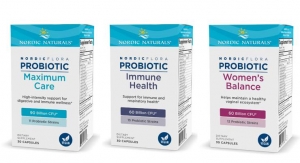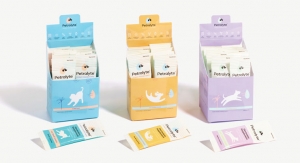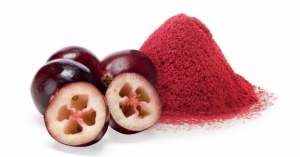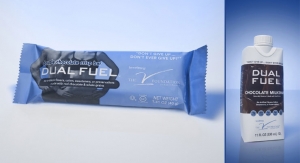09.26.16
Ethical Naturals Inc. (ENI),a supplier of botanical ingredients to the U.S. and international supplement market, released Cranberex, a standardized cranberry extract. Cranberex provides a high concentration of cranberry’s most active constituents: the distinct proanthocyanidins (PAC’s) containing the ‘A-type’ linkages that don’t occur in PAC’s from other tannin-rich foods. Cranberex is thus connected to the latest analytical methods and clinical trials that demonstrate cranberry’s abilities to support urinary tract health.
While the majority—roughly 90%—of American cranberries are produced in the northeastern states, a small percentage of U.S. cranberry is grown in the cool, coastal areas of Oregon. The climate and harvest conditions in this Oregon area tend to produce darker red cranberries that are higher in proanthocyanidin (PAC) levels than northeastern berries. It is these high PAC levels in the Oregon fruit—as well as advances in manufacturing and analytical methods—that form the basis of ENI’s potent Cranberex product.
Cranberries affect and support urinary tract health in a notable way: the cranberry PAC’s inhibit the adhesion of E.coli bacteria to walls of the urinary tract. Studies have confirmed that this effect is specific to the A-linked PAC’s (cranberry), but not to other PAC-rich foods with the more common B-type linkages (for example, chocolate and grapes).
But while research connecting UTH and cranberry PAC’s is significant, it was long obscured by a lack of reliable methods for accurately measuring PAC potency of cranberry extracts. Cranberex uses “the DMAC method” for quantifying the PAC’s in cranberry, a method that became finalized in 2010. This method allows validation of the 15% type-A PAC’s, and therefore the accurate delivery of the 36mg-72mg of PAC’s that support claims for support of urinary tract health.
All Cranberex batches are tested by the DMAC method, which is endorsed by a number of international labs and associations, including the USDA, The Cranberry Institute, and Rutgers University. The results of this testing tie Cranberex into the most recent research, in which a multicentric, randomized, double blind clinical trial clearly affirmed a bacterial anti-adhesion effect in urine, based upon 36mg-72mg/day of cranberry PAC (DMAC method). Cranberex, standardized to 15% PACs, provides these dosages with consumption of and 240mg (36mg PAC), and 480mg (72mg PAC) respectively (Howell, A B. et al). Further test studies are planned.
“The development of Cranberex has been a very positive experience for ENI as we took this product literally ‘from field to finished product,’ which was one of the original goals of our company,” says Cal Bewicke, president of ENI. “The technical work supporting the BL-DMAC method continues to create significant advantages in the therapeutic application of cranberry extracts. We are pleased to be a part of that, to develop the attributes of the Oregon Cranberry, and to see the strong positive response we’re getting to our work both within the U.S. and in Europe.”
Cranberex is also available in the EU through ENI’s representatives, 1-A Food Consulting and PACE-EU in Denmark.
For more information: www.ethicalnaturals.com
While the majority—roughly 90%—of American cranberries are produced in the northeastern states, a small percentage of U.S. cranberry is grown in the cool, coastal areas of Oregon. The climate and harvest conditions in this Oregon area tend to produce darker red cranberries that are higher in proanthocyanidin (PAC) levels than northeastern berries. It is these high PAC levels in the Oregon fruit—as well as advances in manufacturing and analytical methods—that form the basis of ENI’s potent Cranberex product.
Cranberries affect and support urinary tract health in a notable way: the cranberry PAC’s inhibit the adhesion of E.coli bacteria to walls of the urinary tract. Studies have confirmed that this effect is specific to the A-linked PAC’s (cranberry), but not to other PAC-rich foods with the more common B-type linkages (for example, chocolate and grapes).
But while research connecting UTH and cranberry PAC’s is significant, it was long obscured by a lack of reliable methods for accurately measuring PAC potency of cranberry extracts. Cranberex uses “the DMAC method” for quantifying the PAC’s in cranberry, a method that became finalized in 2010. This method allows validation of the 15% type-A PAC’s, and therefore the accurate delivery of the 36mg-72mg of PAC’s that support claims for support of urinary tract health.
All Cranberex batches are tested by the DMAC method, which is endorsed by a number of international labs and associations, including the USDA, The Cranberry Institute, and Rutgers University. The results of this testing tie Cranberex into the most recent research, in which a multicentric, randomized, double blind clinical trial clearly affirmed a bacterial anti-adhesion effect in urine, based upon 36mg-72mg/day of cranberry PAC (DMAC method). Cranberex, standardized to 15% PACs, provides these dosages with consumption of and 240mg (36mg PAC), and 480mg (72mg PAC) respectively (Howell, A B. et al). Further test studies are planned.
“The development of Cranberex has been a very positive experience for ENI as we took this product literally ‘from field to finished product,’ which was one of the original goals of our company,” says Cal Bewicke, president of ENI. “The technical work supporting the BL-DMAC method continues to create significant advantages in the therapeutic application of cranberry extracts. We are pleased to be a part of that, to develop the attributes of the Oregon Cranberry, and to see the strong positive response we’re getting to our work both within the U.S. and in Europe.”
Cranberex is also available in the EU through ENI’s representatives, 1-A Food Consulting and PACE-EU in Denmark.
For more information: www.ethicalnaturals.com


